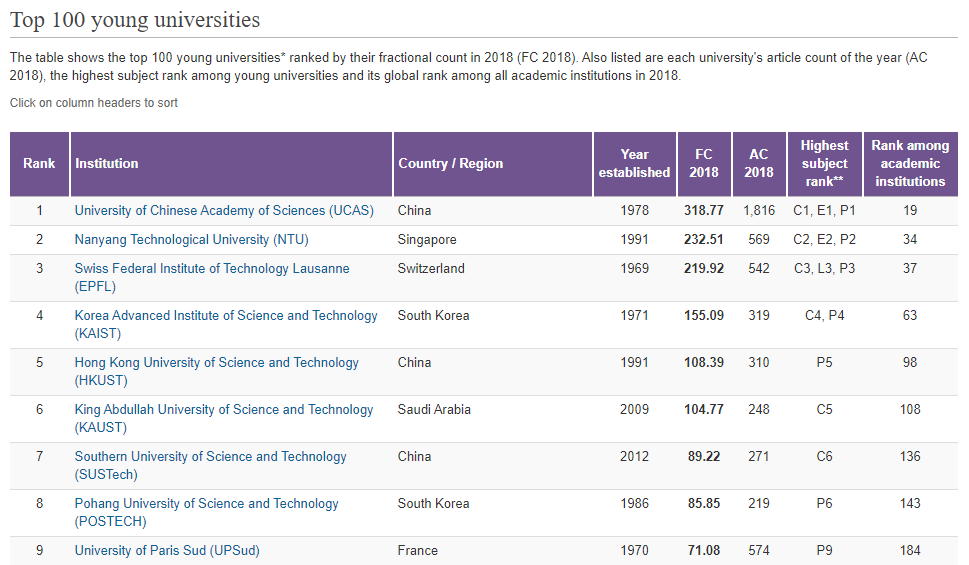Earlier today, Nature Index posted its Young Universities 2019 supplement, ranking young universities that are 50 years old or less. In that list, Southern University of Science and Technology (SUSTech) was ranked 7th in the world. It was also ranked 6th in the world for chemistry, 14th for Earth and environmental sciences, and 11th in physical sciences.

SUSTech has seen considerable growth in its fractional count (FC) and the number of published articles (article count – AC) in the last three years, which is one of the reasons that SUSTech has launched so high up the rankings.
In addition, SUSTech has been ranked the 2nd best rising young university, by Nature Index Young Universities 2019.
The Nature Index Young Universities 2019 Supplement has shown that young universities across Asia have quickly established a reputation in teaching and research, particularly generating high-quality research output.

The most successful among the Nature Index Young universities, defined as being aged 50 years or younger, are making remarkable headway in attracting talent and rising up the ranks through high-quality research outputs and collaborations. The leaders of these higher-education institutions often cite similar reasons for their success. Many feel liberated from the traditions that characterize older institutions, and they list strong interdisciplinary cultures, a track record of innovation and the capacity to attract a more diverse student population.
Nature Index founder David Swinbanks said: “It is interesting to observe that many of the most successful young universities have similar traits. Apart from being free from the traditions that often characterize older institutions, these younger universities often have strong interdisciplinary cultures, and pride themselves on promoting creative thinking, as well as providing leadership opportunities for young and mid-career researchers. These measures also help to attract a diverse student population and encourage the pursuit of unconventional research that inspires innovation.”
The Nature index mainly uses paper counting and fractional measurement to calculate the output of the paper and the performance of scientific research cooperation.
Proofread ByXia Yingying
Photo By